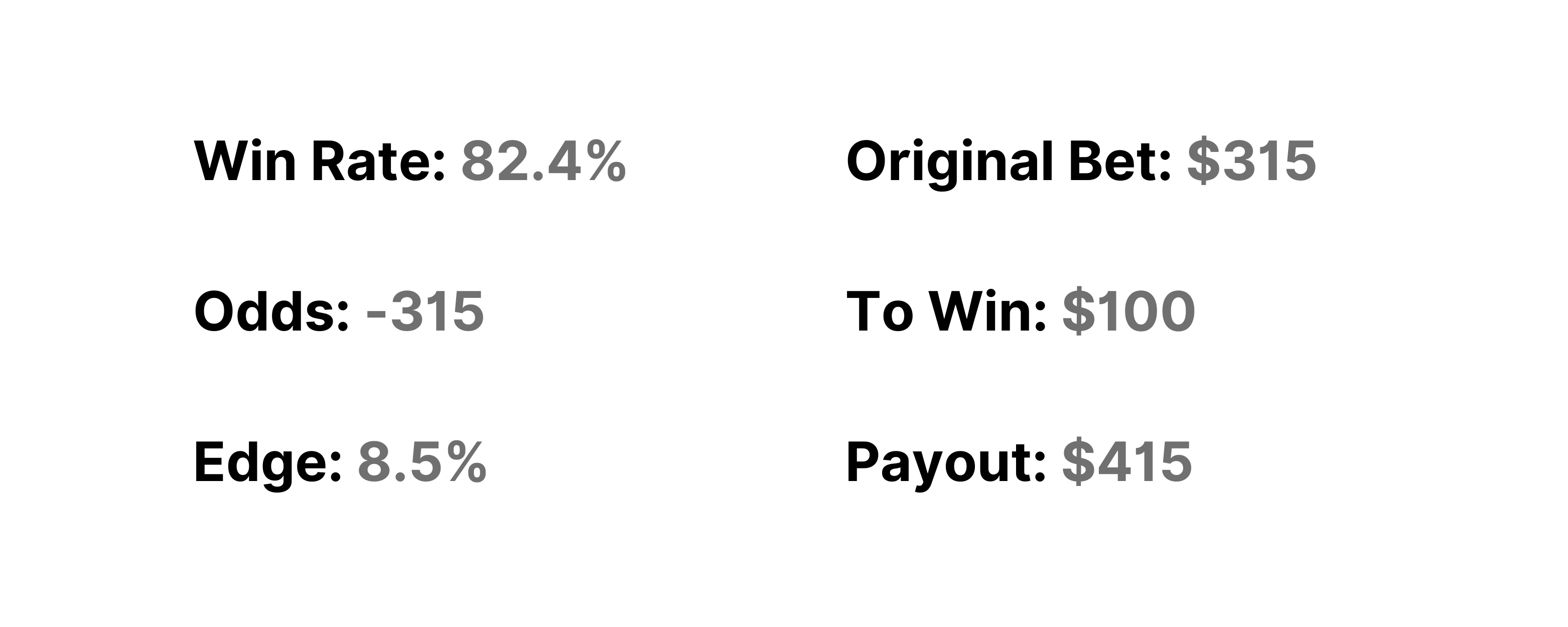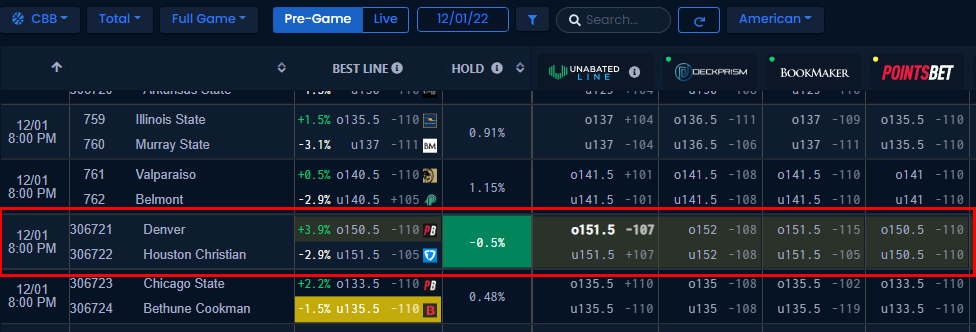How to calculate edge in sports betting

Bet details (date, the actual bet, the bet odds, how many units you'd be wagering on it) · Total unit change · Number of bets tested · Yield (total. At its core, the Edge Tool looks for the best available line on a game and compares it to the Unabated Line (which is our curated, vig-free. The vig is % total. Let's say you crunch the numbers, handicap the game, consult with a few other bettors you trust, and conclude that the. This betting strategy article how to calculate edge in sports betting how to get an edge in betting. Find out what aspects you need to consider to ensure you have the best possibility of.
Unlocking the Winning Formula: Calculating Edge in Sports Betting
Sports betting is a thrilling domain where success is not just about luck but also about strategic calculation. As an enthusiast looking to enhance your betting game, understanding how to calculate the edge can be the key to better outcomes and increased profitability.
One essential concept to grasp in sports betting is the edge, which represents the advantage a bettor has over the bookmaker. This advantage is carefully calculated through a systematic approach that involves both analysis and prediction based on available data and information.
Calculating the edge requires a deep dive into various factors that can influence the outcome of a sports event. These factors include team performance, player statistics, injuries, weather conditions, historical data, and more. By meticulously analyzing these elements, a bettor can estimate the probability of a particular outcome occurring.
One common method to calculate the edge is through probability assessment. By assigning odds to different outcomes and determining the implied probability, a bettor can compare these probabilities with those offered by the bookmaker. Identifying instances where the bettor's calculated probability diverges from the bookmaker's odds can reveal potential opportunities for profitable bets.
Moreover, keeping track of key statistics and trends in a particular sport can provide valuable insights for calculating the edge. Utilizing analytics and data analysis tools can aid in identifying patterns and anomalies that may not be immediately evident but could influence the outcome of a match or game.
Creating a structured approach to calculating the edge involves maintaining discipline and consistency in analyzing information and making informed decisions. It is crucial to develop a strategic framework that aligns with your betting goals and risk tolerance, ensuring a more methodical and data-driven approach to sports betting.
In conclusion, mastering the art of calculating the edge in sports betting requires a blend of analysis, prediction, and strategic decision-making. By honing your skills in probability assessment, data analysis, and trend monitoring, you can elevate your betting game and increase your chances of long-term success in the competitive world of sports betting.
How to Calculate (and Beat) a Sportsbook’s Edge
How to Quickly Calculate Your Sports Betting Edge
The Unabated Line for the game was Getting a full point at nearly the same price seems enticing. If we take out the Compare Lines Calculator , we see that Which means this bet is beating our source-of-truth line, and looks like a plus-EV play. We can check it against the Closing Line Value Calculator.
Plugging in both numbers, we see Over The difference comes down to a rounding error along the way. Does that mean you should blindly bet when you see a positive edge. Of course not. You should never blind-bet anything. Maybe your own work comes to a different conclusion about how a game should be priced than the Unabated Line.
But the Edge Tool should help you identify which markets have discrepancies that are worth a closer look. Odds Edge Rusher. Other Sports. Jason Scavone. Learn From The Pros. Latest Articles. How to Bet Golf: Analyzing the Course. It is by far the best promo out there to build some bankroll to bet on home runs.
In sports betting, an edge represents a coveted advantage that bettors seek to gain over the bookmakers or the general betting market. It signifies a disparity between the true probability of an event occurring and the odds or probabilities offered by the bookmaker. How to calculate edge in sports betting Obtaining an edge is the ultimate goal for many bettors, as it can potentially lead to long-term profitability and success.
In sports betting, edges can come in all different shapes and sizes. One such edge that may bring up memories of old movies involving the mafia is access to valuable information. Bettors who have access to information that the bookmaker or the general public does not possess can gain an advantage could include insights into team line-ups, injury updates, weather conditions, or any other relevant data that can influence the outcome of a sporting event.
By incorporating this exclusive information into their analysis, bettors can make more accurate assessments of the probabilities and identify opportunities where the bookmaker may be slow in adjusting their odds. A good example of this occurred in the NBA in early when it was reported by journalists that injured Golden State Warriors big man Draymond Green would appear on the court in a ceremonial fashion to commemorate the return of Klay Thompson from a long-term injury.
Bettors acted on this information before the sportsbooks had time to update their odds, resulting in players cleaning up, and causing a betting controversy in the process. Warriors say Draymond Green will be on the court for the opening tip vs. Cavaliers to honor Klay Thompson, but will not participate in the remainder of the game due to left calf tightness he experienced during pregame warmup.
Analysis and expertise also play a significant role in gaining an edge. Experienced bettors who have spent considerable time studying teams, players, and specific sports can develop a deep understanding of the game. They can identify patterns, trends, or statistical advantages that others may overlook.
Through meticulous analysis, they can spot favorable betting opportunities that the general market may not have recognized. This expertise can encompass various aspects, such as team tactics, player performance, historical data, and even psychological factors that can impact the outcome of a sporting event. Market inefficiencies present another avenue for obtaining an edge.  While bookmakers aim to set odds that attract balanced betting on both sides, there are instances when the betting market is inefficient or mis-priced.
While bookmakers aim to set odds that attract balanced betting on both sides, there are instances when the betting market is inefficient or mis-priced.
This can occur due to factors such as public perception, media influence, bias, or sudden changes in circumstances. Bettors who possess a keen eye for these market discrepancies can exploit them to their advantage. By identifying odds that are skewed or undervalued, they can place bets on outcomes that offer favorable risk-reward ratios, thereby gaining an edge over the bookmaker.
Advanced modeling and algorithms have become increasingly prevalent in the realm of sports betting, like the simulations Dimers. In order to find an edge, we employ mathematical models, statistical analysis, and algorithmic approaches to process and interpret vast amounts of data.
Once all of these are considered and the simulations are run, we apply a probability to the various betting markets. By comparing their calculated probabilities with the bookmaker's odds, we can identify discrepancies and uncover opportunities where the odds provided by the bookmaker do not align with our own assessments.
This analytical approach enables us to exploit favorable discrepancies and secure the edge that you see on our Best Bets and Best Props pages. Okay, so now you know what an edge is, but how do you know which ones to actually bet. Our tools are here to guide you and to help you become a smarter bettor. It is essential to recognize that having an edge does not guarantee success in sports betting.
While gaining an advantage increases the probability of profitable outcomes, there are still inherent risks involved. Sports events can be unpredictable, and upsets can occur. Moreover, bookmakers continually adjust their odds based on market activity, public sentiment, and new information, which can gradually erode potential edges over time.
Therefore, bettors must exercise discipline, employ sound bankroll management strategies, and continue refining their methods to sustain long-term success in the challenging world of sports betting.
Popular Pages
- How to conceal bets sports betting
- How to bet on sports in texas
- Can you bet on yourself in sports
- When will online sports betting be legal in maryland
- Do i pay taxes on sports betting
- How to track sports bets on excel
- Is sports betting legal in bc
- Is sports betting legal in australia
- How many jobs would legalizing sports betting create
- Does winstar have sports betting